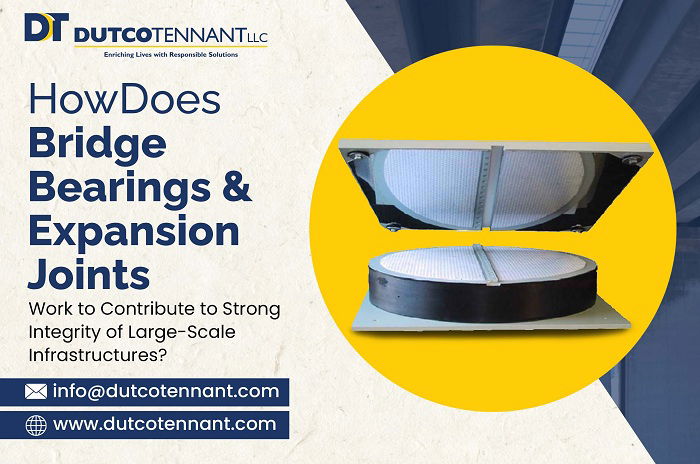Keeping Infrastructure Strong — The Magic of Bridge Bearings & Expansion Joints

Have you ever marvelled at the sight of a grand bridge stretching across a vast river or connecting two distant points over land? Bridges are not just marvels of engineering; they're lifelines, connecting communities and facilitating commerce.
But have you ever wondered what keeps these massive structures sturdy and resilient against the forces of nature and wear and tear? Enter the unsung heroes of bridge construction: bridge bearings and expansion joints.
What Are Bridge Bearings?
Imagine a bridge as a colossal, immovable giant. Now, picture it being able to sway, shift, and adjust with the elements. That's where bridge bearings come into play.
These components, often made of steel, rubber, or a combination of materials, serve as the interface between the bridge superstructure (the part supporting the traffic) and the substructure (the foundation).
Bridge bearings allow controlled movement, enabling the bridge to expand, contract, and rotate slightly in response to temperature changes, traffic loads, and seismic activity. Without these bearings, the bridge would be prone to cracking, buckling, or even collapsing under stress.
Types of Bridge Bearings
There's no one-size-fits-all solution when it comes to bridge bearings. Engineers select the type of bearing based on factors like bridge design, location, expected traffic loads, and environmental conditions. Some common types include:
Fixed Bearings: These bearings restrict movement in all directions, providing vertical support while allowing minimal horizontal movement.
Sliding Bearings: As the name suggests, these bearings allow horizontal movement, typically along a smooth surface, to accommodate thermal expansion and contraction.
Roller Bearings: These bearings allow both vertical and horizontal movement by incorporating rollers, reducing friction and distributing loads more evenly.
Pot Bearings: A type of sliding bearing, pot bearings consist of a concave pot and a convex disc, allowing movement in multiple directions while providing vertical support.
The Role of Expansion Joints
Now, let's talk about expansion joints, the flexible connectors between adjacent spans or sections of a bridge. Just like bridge bearings, expansion joints accommodate movement caused by temperature changes, seismic activity, and traffic loads.
However, expansion joints focus on managing movement at specific points rather than supporting the entire structure.
Expansion joints come in various forms, including modular joints, strip seals, and finger joints. Each type offers unique benefits in terms of durability, ease of installation, and maintenance requirements.
By allowing controlled movement, expansion joints help prevent the accumulation of stress within the bridge structure, prolonging its lifespan and ensuring passenger safety.
The Importance of Maintenance
While bridge bearings and expansion joints play crucial roles in ensuring the integrity of large-scale infrastructures, their effectiveness relies heavily on regular maintenance and inspections. Over time, these components can deteriorate due to exposure to environmental factors, heavy traffic, and general wear and tear.
Routine inspections allow engineers to detect signs of damage or malfunction early on, enabling timely repairs or replacements to prevent catastrophic failures.
End Thoughts
Bridge bearings and expansion joints may not be the most glamorous elements of bridge construction, but they are undeniably vital. By facilitating controlled movement and accommodating various forces, these components contribute to the strength, durability, and safety of large-scale infrastructures.
Starting on a bridge construction project soon? Selecting the right partner from a plethora of bridge expansion joint distributors is crucial for project success. Dutco Tennant LLC is a trusted name that can supply not just high-quality expansion joints but premium bridge bearings as well. Connect with them to discuss your project prospect.
